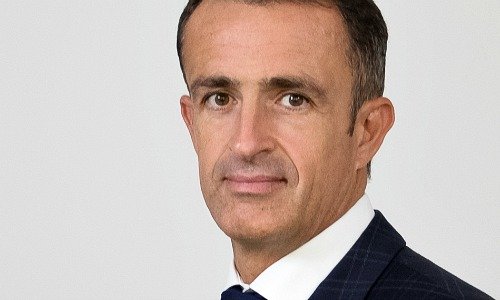External asset managers have the advantage of being able to nimbly and radically alter their strategy in a rapidly-changing operating environment, Benoit Barbereau writes in his essay for finews.first.
finews.first is a forum for renowned authors specialized on economic and financial topics. The texts are published in both German and English. The publishers of finews.com are responsible for the selection.
Independence in terms of investment policy and product selection has always been the key selling point of external asset managers, or EAMs. That independence is easy to claim when nothing requires them to disclose so-called trailer fees that often link them to custodian banks and product platforms.
However, the price transparency required by current regulatory changes will now force EAMs to prove how independent they really are. That will probably mean the end of trailer fees, to be replaced by «all-in» fee models, which are more transparent but less lucrative overall. As well as lower revenues, higher costs look inevitable, particularly because of tighter controls ensuring that clients’ investments are suitable for their risk profile.
«There are currently almost 2,500 external asset managers in the industry in Switzerland»
In the circumstances, many believe that consolidation is inevitable. There are currently almost 2,500 EAMs in Switzerland, of whom around 80 percent manage less than $250 million. However, building up scale may not be the only winning medium-term strategy for EAMs, who could also find growth by using what has become a crucial advantage for them: their agility.
First of all, some EAMs will be able to use that agility to gain a technological advantage. The simplicity of their information technology architecture, which is entirely independent of banks’ increasingly complex platforms, gives them the opportunity of being at the leading edge of the digital revolution.
«Banks would be well advised to start planning for this shift now»
Their ability to forge partnerships with those offering the most innovative fintech solutions – in areas as varied as digital relationship on-boarding, risk management, consolidated reporting and digital communication – could be a way of tackling shrinking margins. Alliances of this kind would be beneficial in terms of both boosting revenues by attracting new types of clients, and cutting costs by improving operational processes.
These technology-incubator EAMs will select their custodian banks based on their ability to handle these new IT requirements, particularly in terms of transaction connectivity and data exchange capabilities in the broad sense. Banks would be well advised to start planning for this shift now.
«Wealth planning, and its tax aspects in particular, is now a central concern for clients»
In a rapidly-changing operating environment, EAMs, which generally have a simple governance structure, also have the advantage of being able to make radical, fast changes to their strategy. In this respect, there are two underlying trends that both give the opportunity of exploring new business models, i.e. tax transparency and the digital revolution, including blockchain technology.
Wealth planning, and its tax aspects in particular, is now a central concern for clients, and therefore for EAMs as well. The most opportunistic EAMs will see a chance to expand their value proposition to include traditional family office services.
At the same time, some Swiss EAMs are trying to harness the potential of the growing blockchain economy. They are being helped by Switzerland’s proactive support of this high-profile new business area.
«Their business model and organisational efficiency gives them unrivalled agility»
The most agile EAMs, some of whom are actively taking part in the discussions being held by legislative and regulatory authorities, have been able to develop innovative services around cryptocurrencies or ICO (initial coin offerings) advisory work. By working with blockchain players at all stages of their projects, EAMs are hoping to achieve obvious revenue synergies with their traditional wealth management business in the medium- to long-term.
As a result, consolidation and restructuring – and the pain that often comes with – are not the only options for EAMs faced with changes in their ecosystem. Their business model and organizational efficiency gives them unrivaled agility, allowing them to seize the opportunities that those same changes are creating.
By doing so, they can become catalysts for financial innovation, bringing with them banking partners that have the desire and flexibility needed to make adjustments and meet their requirements.
Benoit Barbereau is the head of external asset managers and wealth management services at Union Bancaire Privée in Geneva. An engineering graduate, he began his career as a fixed income trader at Morgan Stanley and also worked for PwC and BNP Paribas. He has been with UBP since 2011.
Previous contributions: Rudi Bogni, Peter Kurer, Oliver Berger, Rolf Banz, Dieter Ruloff, Werner Vogt, Walter Wittmann, Alfred Mettler, Peter Hody, Robert Holzach, Craig Murray, David Zollinger, Arthur Bolliger, Beat Kappeler, Chris Rowe, Stefan Gerlach, Marc Lussy, Nuno Fernandes, Richard Egger, Maurice Pedergnana, Marco Bargel, Steve Hanke, Andreas Britt, Urs Schoettli, Ursula Finsterwald, Stefan Kreuzkamp, Oliver Bussmann, Michael Benz, Peter Hody, Albert Steck, Andreas Britt, Martin Dahinden, Thomas Fedier, Alfred Mettler, Brigitte Strebel, Peter Hody, Mirjam Staub-Bisang, Nicolas Roth, Thorsten Polleit, Kim Iskyan, Stephen Dover, Denise Kenyon-Rouvinez, Christian Dreyer, Kinan Khadam-Al-Jame, Robert Hemmi, Anton Affentranger, Yves Mirabaud, Katharina Bart, Frédéric Papp, Hans-Martin Kraus, Gerard Guerdat, Didier Saint-Georges, Mario Bassi, Stephen Thariyan, Dan Steinbock, Rino Borini, Bert Flossbach, Michael Hasenstab, Guido Schilling, Werner E. Rutsch, Dorte Bech Vizard, Adriano B. Lucatelli, Katharina Bart, Maya Bhandari, Jean Tirole, Hans Jakob Roth, Marco Martinelli, Beat Wittmann, Thomas Sutter, Tom King, Werner Peyer, Thomas Kupfer, Peter Kurer, Arturo Bris, Frederic Papp, Claudia Kraaz, James Syme, Peter Hody, Claude Baumann, Dennis Larsen, Bernd Kramer, Ralph Ebert, Marionna Wegenstein, Armin Jans, Nicolas Roth, Hans Ulrich Jost, Patrick Hunger, Fabrizio Quirighetti, Claire Shaw, Peter Fanconi, Alex Wolf, Dan Steinbock, Patrick Scheurle, Claude Baumann, Sandro Occhilupo, Claudia Kraaz, Will Ballard, Michael Bornhäusser, Nicholas Yeo, Claude-Alain Margelisch, Jean-François Hirschel, Jens Pongratz. and Samuel Gerber and Philipp Weckherlin, Michel Longhini, Anne Richards, Michael Welti and Antoni Trenchev.


































